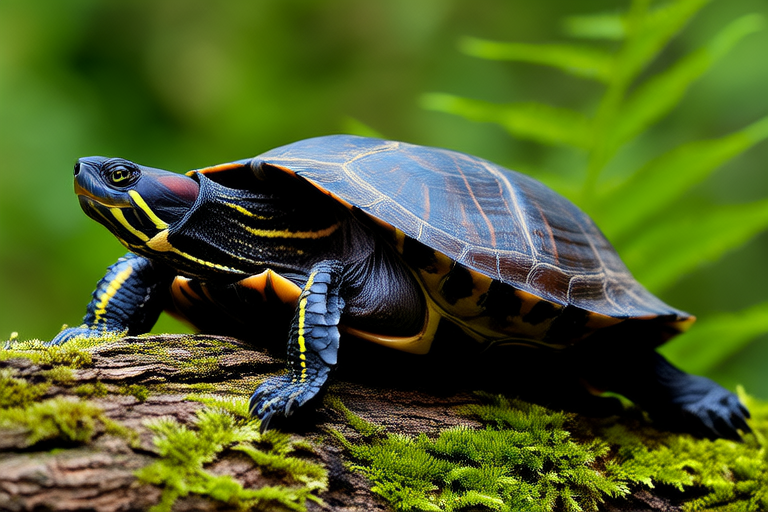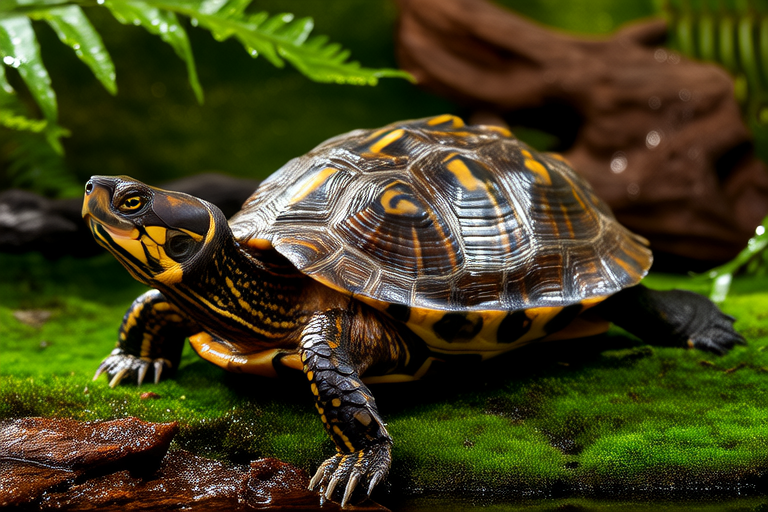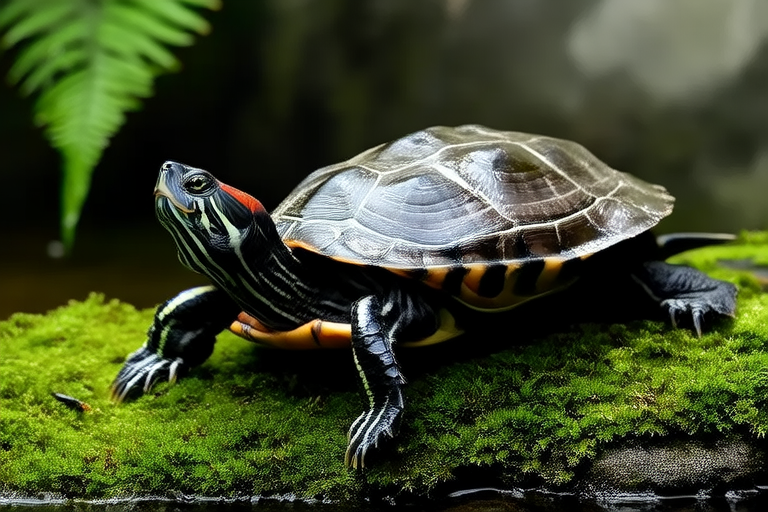
Meet the Three-Striped Box Turtle: The Perfect Low-Maintenance Pet for Your Home
The world of pet ownership offers a wide array of choices, from traditional cats and dogs to more exotic creatures like birds and reptiles. Among these options, the three-striped box turtle stands out as an excellent choice for those looking for a low-maintenance yet fascinating companion. This article delves into the unique characteristics, dietary needs, living conditions, and care requirements of the three-striped box turtle, providing all the information you need to make an informed decision about adopting one.
An Introduction to the Three-Striped Box Turtle
The three-striped box turtle (Terrapene carolina triunguis) is a small terrestrial turtle known for its distinct three yellow stripes that run down its dark shell. These markings are what give the species its name and make it easily recognizable. Native to the central United States, specifically parts of Missouri, Arkansas, Oklahoma, Kansas, and Texas, the three-striped box turtle thrives in open woodlands, grasslands, and marshes. Their natural habitat is characterized by a mix of sunny areas and shaded spots, offering both warmth and protection.
One of the most notable features of the three-striped box turtle is its hinged plastron, which allows it to completely close its shell when threatened, providing excellent protection against predators. This ability makes them well-suited to their environment and contributes to their long lifespan, often exceeding 30 years in captivity.
Dietary Needs
Three-striped box turtles are omnivorous, meaning they consume both plant matter and animal protein. In the wild, their diet consists of a variety of foods such as insects, worms, fruits, berries, and leafy greens. When kept as pets, it’s essential to replicate this diverse diet to ensure optimal health. A balanced diet for your three-striped box turtle should include:
- Protein sources: Crickets, mealworms, earthworms, and occasional pinkie mice.
- Fruits and vegetables: Apples, strawberries, blueberries, kale, collard greens, and carrots.
- Calcium supplements: Dusting food with calcium powder once or twice a week is crucial for bone health.
It’s important to offer a varied diet to prevent nutritional deficiencies and promote overall well-being. Additionally, fresh water should always be available for drinking and soaking.
Ideal Living Conditions
Creating a suitable habitat for your three-striped box turtle is key to ensuring its health and happiness. Whether indoors or outdoors, the enclosure should mimic the turtle’s natural environment as closely as possible. Here’s what you need to consider:
Indoor Habitat Setup
For indoor habitats, a large terrarium is necessary, ideally measuring at least 4 feet long, 2 feet wide, and 18 inches high. This provides ample space for the turtle to move around comfortably. The substrate should be non-toxic and easy to clean, such as coconut fiber or reptile-safe mulch. Avoid using gravel or sand, as they can pose choking hazards.
A basking area should be provided with a heat lamp or ceramic heater, maintaining a temperature gradient between 75°F and 90°F. UVB lighting is also crucial for vitamin D synthesis and proper calcium absorption. A hide box or log should be included to provide a sense of security.





